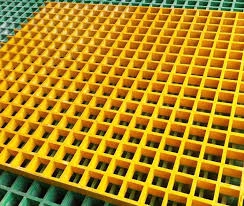loading...
- No. 9, Xingyuan South Street, Dongwaihuan Road, Zaoqiang County, Hengshui, Hebei, China
- admin@zjcomposites.com
- +86 15097380338
- Welcome to visit our website!
Advancements in Glass Fiber Reinforced Polymer Rebar for Enhanced Structural Applications
Glass Fiber Reinforced Polymer Rebar A Strong Future in Construction
In the ever-evolving world of construction materials, Glass Fiber Reinforced Polymer (GFRP) rebar has emerged as a pioneering solution, promising to revolutionize traditional building practices. As engineers and architects constantly seek stronger, more durable, and lightweight materials, GFRP rebar stands out due to its countless advantages over conventional steel rebar.
GFRP rebar is produced by embedding glass fibers within a polymer matrix, resulting in a composite material that offers remarkable tensile strength while remaining significantly lighter than steel. This unique combination of properties makes GFRP rebar an ideal choice for a variety of construction applications, from bridges and highways to residential buildings and marine structures.
Glass Fiber Reinforced Polymer Rebar A Strong Future in Construction
The lightweight nature of GFRP rebar is another critical advantage. It is approximately one-fourth the weight of steel rebar, making transportation and handling significantly easier and less labor-intensive. Reduced weight also translates to lower shipping costs, which can be particularly beneficial for large-scale projects where logistics play a crucial role in budget management. Additionally, the ease of handling GFRP rebar allows for quicker installation on-site, resulting in improved productivity during construction.
glass fiber reinforced polymer rebar

Another remarkable feature of GFRP rebar is its non-magnetic and non-conductive properties. This characteristic renders it an excellent choice for specific applications such as hospitals and laboratories, where magnetic fields and electrical interference can disrupt critical operations. GFRP’s non-conductive nature ensures that electrical currents do not pass through the rebar, providing an added layer of safety in sensitive environments.
Despite its numerous advantages, GFRP rebar has historically been underutilized, largely due to higher initial costs when compared to traditional steel rebar. However, the long-term economic benefits of using GFRP often outweigh the upfront investment. As projects evolve and end-users require more sustainable and maintenance-free solutions, the demand for GFRP rebar is expected to rise. Industry experts predict that innovations in manufacturing technology may reduce costs, making GFRP an even more attractive option for builders and developers.
Environmental sustainability is another key concern driving the adoption of materials like GFRP rebar. With an increasing emphasis on developing eco-friendly construction practices, the reduced carbon footprint associated with manufacturing and prolonged lifespan of GFRP products presents an appealing choice. In addition, the recycling potential of GFRP materials aligns with the growing trend of circular economy principles in the construction industry.
In conclusion, Glass Fiber Reinforced Polymer rebar serves as a glimpse into the future of construction materials. Its combination of durability, lightweight nature, corrosion resistance, and non-conductive properties aligns perfectly with the modern construction industry's needs. Overcoming historical cost barriers will undoubtedly accelerate its adoption as more projects highlight the economic and environmental advantages of GFRP. As technology advances and environmental considerations become increasingly prioritized, GFRP rebar is poised to play a vital role in building resilient, sustainable structures for the future.
Considering the trends and demands in modern construction, GFRP rebar offers an exciting, innovative pathway forward. Its incorporation into building projects not only enhances structural integrity but also promotes a commitment to sustainability. As we continue to confront the challenges of climate change and resource scarcity, the widespread use of GFRP rebar may very well be a crucial step toward creating a more sustainable and resilient built environment. The construction industry stands on the brink of transformation, and GFRP rebar is leading the way.
-
GRP Structures: The Future of Lightweight, High-Performance EngineeringNewsJun.20,2025
-
FRP Water Tank: High-Performance Storage for Corrosive and Clean Water SystemsNewsJun.20,2025
-
FRP Square Tube: The New Industry Standard for Chemical and Structural ApplicationsNewsJun.20,2025
-
FRP Pultruded Profiles: The Ultimate Choice for Lightweight Structural StrengthNewsJun.20,2025
-
FRP Handrails: The Safer, Smarter, and Stronger Choice for Modern InfrastructureNewsJun.20,2025
-
FRP Grating: The Smart Solution for Durable, Lightweight Industrial FlooringNewsJun.20,2025
-
Why Choose a Galvanized Water Tank for Your Storage NeedsNewsMay.21,2025
